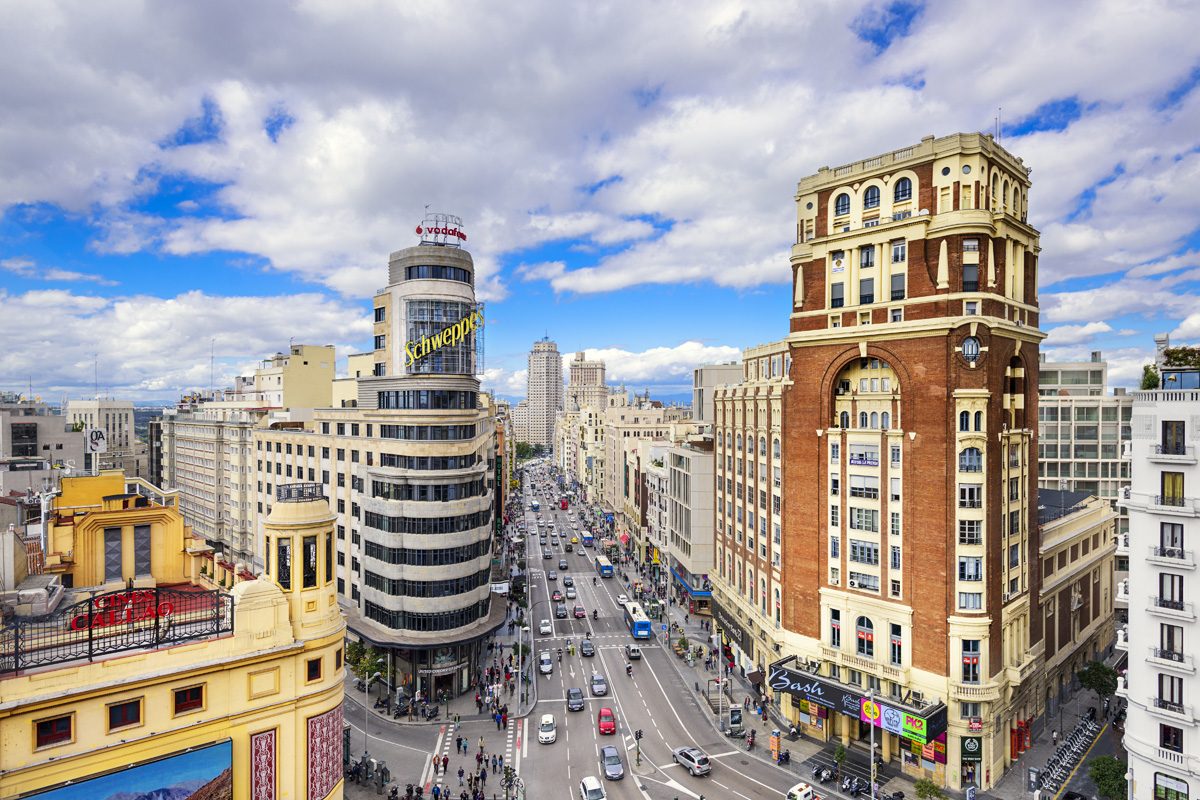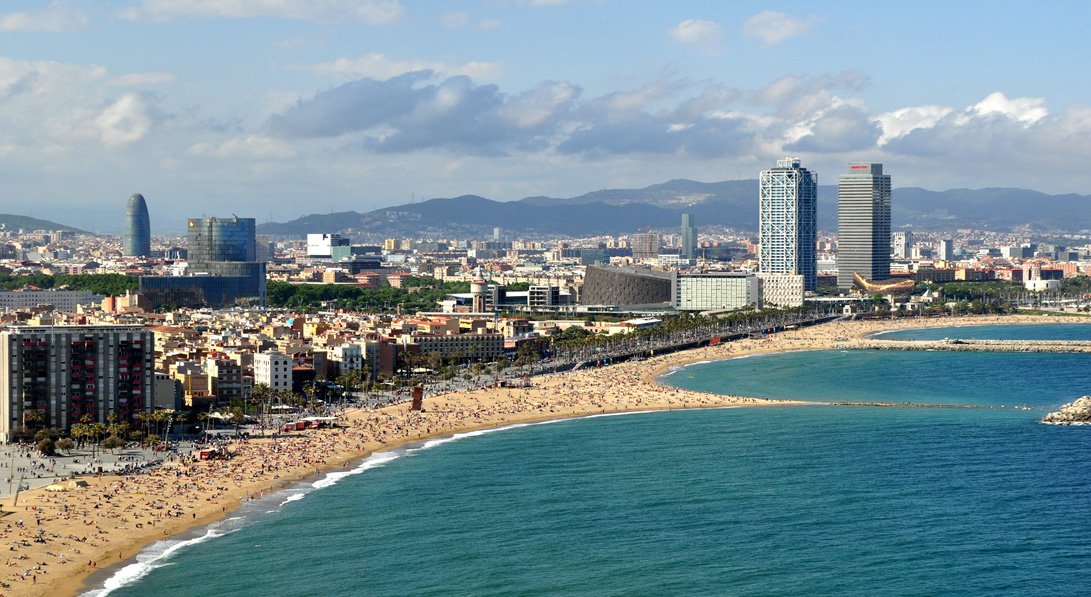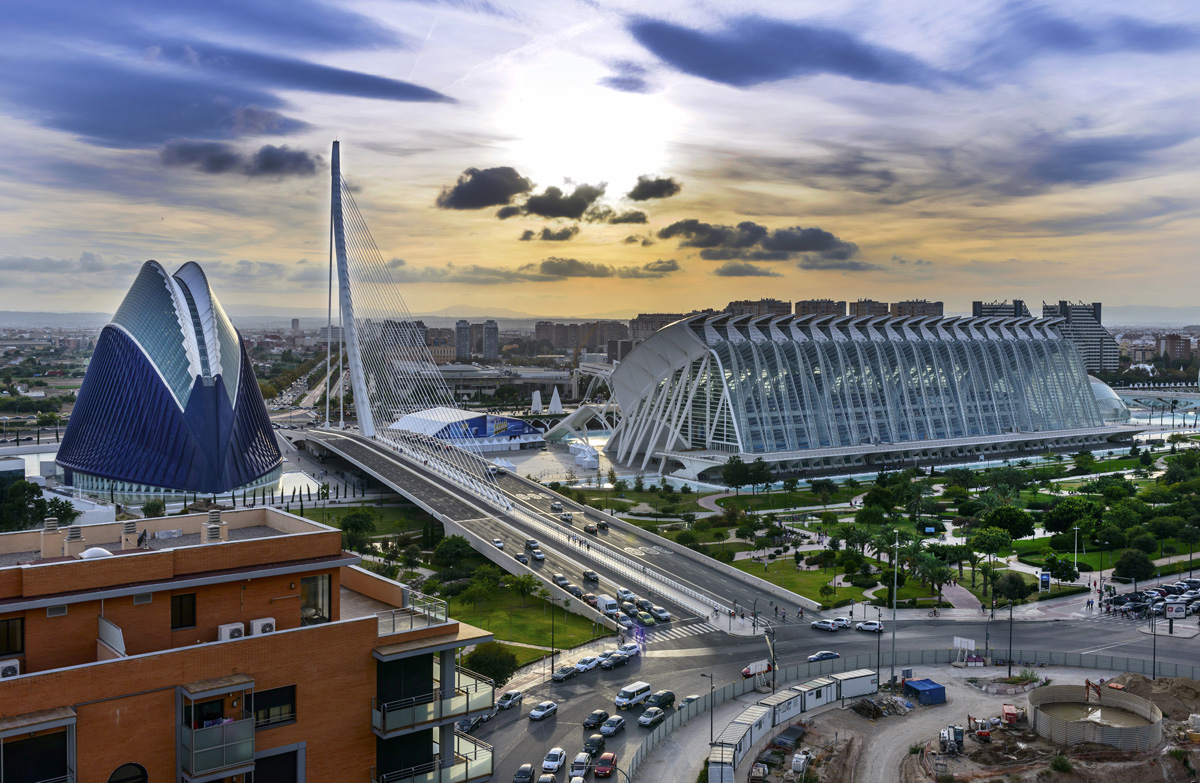Am 31. Oktober feiern wir den UN-Weltstadttag und haben uns Gedanken über die wunderbar vielfältigen Städte Spaniens gemacht, in denen heute rund 80% der Bevölkerung leben. Unsere große Factor3 On Wheels-Tour durch Spanien führt uns zu vielen dieser Orte, während wir mit Branchenexperten über die Zukunft der Ereignisse in Spanien sprechen. Halte also bitte die Augen offen, wenn Du diese erstaunlichen Städte besuchen und unsere Partner mit uns treffen möchtest.
M A D R I D

Wir beginnen mit unserer Hauptstadt Madrid, unsere bevölkerungsreichste Stadt, eine großartige Stadt mit über 3 Millionen Einwohnern. Madrid wurde 1561 zur Hauptstadt erklärt, da sie direkt im Zentrum des Landes liegt. Es ist die drittgrößte Stadt der Europäischen Union.
Die charmante Altstadt der Hauptstadt, Madrid de Los Austrias, stammt aus dem frühen 16. Jahrhundert und beherbergt das angeblich älteste Restaurant der Welt, El Sobrino de Botin aus dem Jahr 1725, dessen Feuerofen seit dem ersten Tag brennt. Madrids weltberühmter Prado, Reina Sofia und Thyssen-Bornemisza bilden das Goldene Dreieck der Kunst und beherbergen Werke von Legenden wie Goya, Velázquez, Picasso und Dalí. Der Königspalast ist Europas größter und obwohl er die offizielle Residenz der spanischen Königsfamilie ist, wird er nur für staatliche Zeremonien genutzt und kann auch besichtigt werden.
Madrids Einwohner, Los Madrileños, werden oft als „Gatos“ oder Katzen bezeichnet. Viele führen dies darauf zurück, dass sie bis spät schlafen, aber historisch gesehen bezieht sich der Spitzname auf einen alten spanischen Soldaten, der mit der Gewandtheit einer Katze die Außenmauern erklomm. Wir glauben jedoch, dass es etwas damit zu tun haben könnte, dass die Einheimischen so lange aufbleiben!
B A R C E L O N A

Als nächstes kommt Barcelona mit etwas mehr als eineinhalb Millionen Einwohnern. Der Legende nach war der Ort, als der Halbgott Herkules das heutige Barcelona besuchte, so einladend, dass er beschloss, hier mit Hilfe von Hermes, dem Gott des Handels, eine Stadt zu gründen. Festere Beweise deuten darauf hin, dass ab 218 v. Chr. eine römische Kolonie in der Gegend vorhanden war.
In der Altstadt befindet sich das bekannte gotische Viertel, ein Labyrinth charmanter Straßen und Plätze und natürlich die erste der beiden Kathedralen der Stadt, die 1448 nach 150 Jahren Bauzeit fertiggestellt wurde. Wie jeder weiß, ist unsere andere Kathedrale, Gaudis weltberühmte Sagrada Familia, noch unvollendet. Der Fertigstellungstermin ist auf 2026 festgelegt; einhundert Jahre nach dem frühen Tod des Architekten, nachdem er von einer Straßenbahn überfahren wurde. Es sind vielleicht Gaudi und seine Zeitgenossen, die am meisten daran erinnern, welchen einzigartigen Charakter sie unserer Stadt verliehen haben. Ihre Jugendstilkreationen aus dem frühen 20. Jahrhundert, darunter Casa Batlló und La Pedrera, befinden sich im Eixample-Viertel von Barcelona, einer Erweiterung der Altstadt, als die Stadt zu groß für ihre Stiefel wurde.
Barcelona ist auch als pulsierende Strandstadt bekannt. Ironischerweise stammen unsere Strände erst aus dem Jahr 1992, dem Jahr der Olympischen Spiele, als die Stadt, die bis dahin dem Meer den Rücken zugewandt hatte, das Mittelmeer zu umarmen begann und Strände schuf, die es vorher nicht gab!
Hier sind wir auch für unser großartiges Essen bekannt, von kleinen Tascas und Tabernas bis zu den 20 mit Michelin-Stern ausgezeichneten Restaurants für den anspruchsvollsten Gaumen. Jeder, der nach seinem Abendessen tanzen möchte, kann in einen der vielen coolen Nachtclubs der Stadt gehen.
V A L E N C I A

Unsere dritte Stadt ist Valencia, Heimat der Paella. Es ist eine römische Stadt, aber mit sehr zeitgemäßem Stil. In nur einem kurzen Spaziergang können Besucher antike Überreste, die charmante Altstadt, in der sich die gotische Kathedrale und angeblich der Heilige Gral befinden, sowie die futuristischen Werke des berühmtesten Architekten von Valencia, Santiago Calatrava, genießen. Seine sogenannte Stadt der Künste und Wissenschaften ist ein intergalaktischer Architekturkomplex wie nie zuvor gesehen. Der Standort befindet sich im Bett des Flusses Turia, der 1957 nach der Überschwemmung seiner Ufer umgeleitet wurde. Das Gebiet wurde jetzt in einen spektakulären Park umgewandelt, einen der größten in Europa und eine Oase für Hundespazierer und Jogger!
Der bekannteste Strand der Stadt ist eine 2 Kilometer lange Strecke namens La Malvarrosa. Angesichts des fantastischen Klimas in Valencia ist er bei Einheimischen und Touristen gleichermaßen beliebt.
Etwas außerhalb von Valencia, etwa 30 Autominuten entfernt, befindet sich das wunderschöne Reisanbaugebiet der Albufera. Es ist einen Besuch wert und möglicherweise der beste Ort, um eine leckere Paella zu probieren.
Oh, und Valencianer lieben es einfach zu feiern. Die jährlichen Fallas jeden März sind ein unglaubliches 5-Tage-Spektakel, bei dem riesige künstlerische Konstruktionen in der ganzen Stadt ausgestellt werden, die um den Hauptpreis konkurrieren, bevor sie in der letzten Nacht niedergebrannt werden. Las Fallas ist ein unumgängliches Fest der Kunst, Musik und des Feuers.
